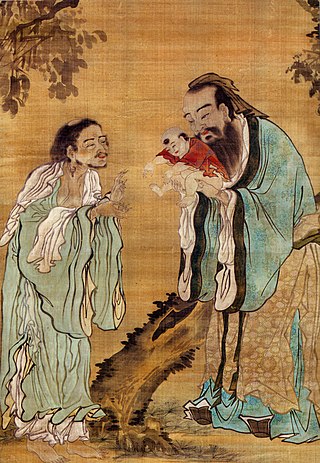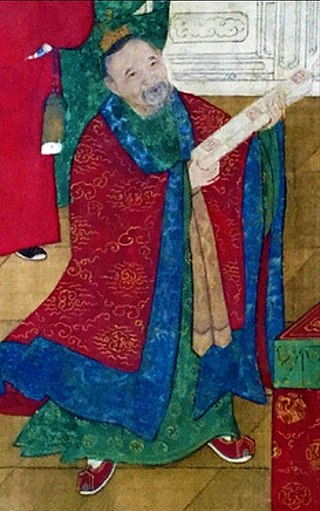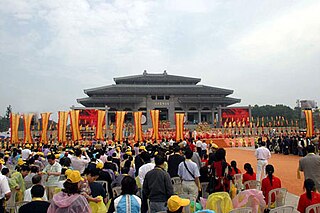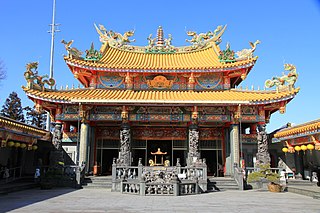
Taoism or Daoism is a diverse tradition indigenous to China, variously characterized as both a philosophy and a religion. Taoism emphasizes living in harmony with what is known as the Tao—generally understood as being the impersonal, enigmatic process of transformation ultimately underlying reality. The Tao is represented in Chinese by the character 道, which has several related meanings; possible English translations for it include 'way', 'road', and 'technique'. Symbols such as the bagua and taijitu are often employed to illustrate various aspects of the Tao, which can never be sufficiently described with words and metaphors alone. Taoist thought has informed the development of various practices and rituals within the Taoist tradition and beyond, including forms of meditation, astrology, qigong, feng shui, and internal alchemy. A common goal of Taoist practice is self-cultivation resulting in a deeper appreciation of the Tao, and thus a more harmonious existence.

The Tao is the natural way of the universe, whose character one's intuition must discern to realize the potential for individual wisdom, as conceived in the context of East Asian philosophy, religion, and related traditions. This seeing of life cannot be grasped as a concept. Rather, it is seen through actual living experience of one's everyday being. Its name, "Tao", or "Dao" , came from Chinese, where it signifies the way, path, route, road, or sometimes more loosely doctrine, principle, or holistic belief.

Religious music is a type of music that is performed or composed for religious use or through religious influence. It may overlap with ritual music, which is music, sacred or not, performed or composed for or as ritual. Religious songs have been described as a source of strength, as well as a means of easing pain, improving one's mood, and assisting in the discovery of meaning in one's suffering. While style and genre vary broadly across traditions, religious groups still share a variety of musical practices and techniques.

Religion in China is diverse and most Chinese people are either non-religious or practice a combination of Buddhism and Taoism with a Confucian worldview, which is collectively termed as Chinese folk religion.

The Three Pure Ones, also translated as the Three Pure Pellucid Ones, the Three Pristine Ones, the Three Divine Teachers, the Three Clarities, or the Three Purities, are the three highest gods in the Taoist pantheon. They are regarded as pure manifestations of the Tao and the origin of all sentient beings, along with the "lords of the Three Life Principles or 'Breaths' (qi)". They were also gods who were "associated with the sky, the earth and the underworld."

In Chinese philosophy, the three teachings are Confucianism, Taoism, and Buddhism. All of these three teachings are considered a harmonious aggregate. Literary references to the "three teachings" by prominent Chinese scholars date back to the 6th century. The term may also refer to a non-religious philosophy built on that aggregation.

Chinese folk religion, also known as Chinese popular religion, comprehends a range of traditional religious practices of Han Chinese, including the Chinese diaspora. Vivienne Wee described it as "an empty bowl, which can variously be filled with the contents of institutionalised religions such as Buddhism, Taoism, Confucianism and Chinese syncretic religions”. This includes the veneration of shen (spirits) and ancestors, exorcism of demonic forces, and a belief in the rational order of nature, balance in the universe and reality that can be influenced by human beings and their rulers, as well as spirits and deities. Worship is devoted to deities and immortals, who can be deities of places or natural phenomena, of human behaviour, or founders of family lineages. Stories of these gods are collected into the body of Chinese mythology. By the Song dynasty (960-1279), these practices had been blended with Buddhist doctrines and Taoist teachings to form the popular religious system which has lasted in many ways until the present day. The present day government of mainland China, like the imperial dynasties, tolerates popular religious organizations if they bolster social stability but suppresses or persecutes those that they fear would undermine it.

A daoshi, translated as Taoist priest, Taoist monk, or Taoist professional is a priest in Taoism. The courtesy title of a senior daoshi is daozhang, and a highly accomplished and revered daoshi is often called a zhenren.

The Lingbao School, also known as the School of the Sacred Jewel or the School of Numinous Treasure, was an important Daoist school that emerged in China in between the Jin dynasty and the Liu Song dynasty in the early fifth century CE. It lasted for about two hundred years until it was absorbed into the Shangqing and Zhengyi currents during the Tang dynasty. The Lingbao School is a synthesis of religious ideas based on Shangqing texts, the rituals of the Celestial Masters, and Buddhist practices.

In the study of comparative religion, the East Asian religions or Taoic religions, form a subset of the Eastern religions. This group includes Chinese religion overall, which further includes Ancestral Worship, Chinese folk religion, Confucianism, Taoism and popular salvationist organisations, as well as elements drawn from Mahayana Buddhism that form the core of Chinese and East Asian Buddhism at large. The group also includes Japanese Shinto, Tenrikyo, and Korean Muism, all of which combine Shamanistic elements and indigenous ancestral worship with various influences from Chinese religions. Chinese salvationist religions have influenced the rise of Japanese new religions such Tenriism and Korean Jeungsanism; as these new religious movements draw upon indigenous traditions but are heavily influenced by Chinese philosophy and theology.
The history ofTaoism stretches throughout Chinese history. Originating in prehistoric China, it has exerted a powerful influence over Chinese culture throughout the ages. Taoism evolved in response to changing times, with its doctrine and associated practices being revised and refined. The acceptance of Taoism by the ruling class has waxed and waned, alternately enjoying periods of favor and rejection. Most recently, Taoism has emerged from a period of suppression and is undergoing a revival in China.

Taoism is believed to be the inspiration for some spiritual concepts in Japanese culture. Taoism's influence can be seen throughout the culture but to a lesser extent than Confucianism.
There is significant scholarly debate about the Taoist understanding of death. The process of death itself is described as shijie or "release from the corpse", but what happens after is described variously as transformation, immortality or ascension to heaven. For example, the Yellow Emperor was said to have ascended directly to heaven in plain sight, while the thaumaturge Ye Fashan was said to have transformed into a sword and then into a column of smoke which rose to heaven.

The Quanzhen School is currently one of the two dominant denominations of Daoism in mainland China. It originated in Northern China in 1170 under the Jin dynasty (1115–1234).
Yao folk religion is the ethnic religion of the Yao people, a non-Sinitic ethnic group who reside in the Guangxi, Hunan and surrounding provinces of China. Their religion has been profoundly intermingled with Taoism since the 13th century, so much that it is frequently defined as Yao Taoism. In the 1980s it was found that the Yao clearly identified with the Chinese-language Taoist theological literature, seen as a prestigious statute of culture.

Chinese ritual mastery traditions, also referred to as ritual teachings, or Folk Taoism, or also Red Taoism, constitute a large group of Chinese orders of ritual officers who operate within the Chinese folk religion but outside the institutions of official Taoism. The "masters of rites", the fashi (法師), are also known in east China as hongtou daoshi (紅頭道士), meaning "redhead" or "redhat" daoshi, contrasting with the wutou daoshi (烏頭道士), "blackhead" or "blackhat" priests, of Zhengyi Taoism who were historically ordained by the Celestial Master.

Nuo folk religion, or extendedly, Chinese popular exorcistic religion, is a variant of Chinese folk religion with its own system of temples, rituals, orders of priests, and gods that is interethnic and practiced across central and southern China but is also intimately connected to the Tujia people. It arose as an exorcistic religious movement, which is the original meaning of nuó. It has strong influences from Taoism.
The following outline is provided as an overview of and topical guide to Taoism:
Taoist Art relates to the Taoist philosophy and narratives of Lao-tzu that promote "living simply and honestly and in harmony with nature."
Lu Xiujing, known by the courtesy name Yuande (元德) and the posthumous name Jianji (簡寂), was a Taoist compiler and ritualist who lived under the Liu Song dynasty. His education was of Confucianist leaning. Nevertheless, he chose to study Taoism. Lu was devoted to his faith to the point of abandoning his family.













